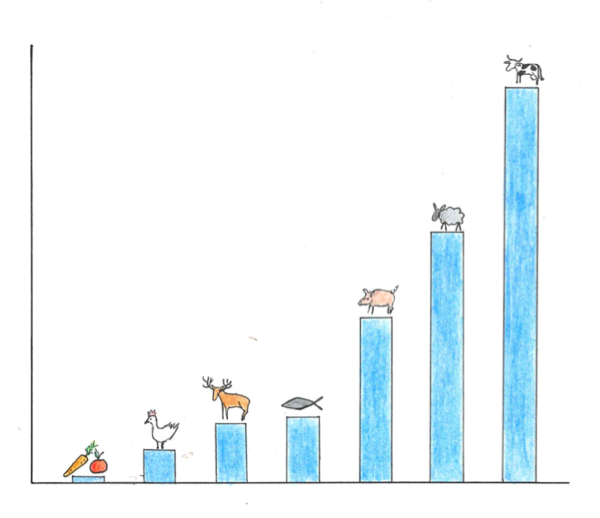What is climate friendly food? That is the question that me and my fellow students asked when we started to work on a project for one of the agronomy course at the Swedish University of Agricultural Sciences. The project was about modifying commonly cooked recipes so they have lower carbon footprint. The goal was to reduce food consumption emissions from 2 to 1 tons CO2e per person in a year.
The project was also about designing inspiring tasty recipes, which people would want to cook. The project resulted in about 60 climate friendly recipes. We also constructed two climate friendly weekly lunch menus by using the recipes.
Figuring out the most environmentally friendly eating options requires special assessment. Created for evaluating environmental impact of production, LCA (Life Cycle Analysis) is one of such tools. LCA is also commonly used to calculate the climate impact of food production and includes all activities involved in the process, from cultivation, to activities on the farm, including all transportation and disposal. LCA is a sophisticated methodology, and food LCAs can become very complex because value chains of food products can be long and it can also be difficult to obtain reliable data.
Putting the numbers together, is one type of meat more climate friendly than the other?
So, the good news is that we can eat meat and still be climate friendly, but we need to take into account how much and what meat we eat. Scientists devised an equivalent measure called CO2e (which literally means carbon dioxide equivalent) by calculating the level of greenhouse gas emissions from meat production. This indicator takes into account not only carbon dioxide, but also other gases such as methane.
Our LCA model showed that from a climate perspective it is better to eat poultry, fish and vegetable in comparison with beef: a meal with vegetables produces around 0,07 to 1 kilo CO2e/portion and a meal with beef produces around 5 to 9 kilo CO2e/portion. So for example, if you do a beef goulash with minced meat it’s around 4 kilo CO2e/portion. If you, instead of meat, add root vegetables and lenses you suddenly have reduced the emissions with 93%!
 This scale illustrates the amount of greenhouse gas emissions caused by different food categories, such as vegetables, pork and beef.
This scale illustrates the amount of greenhouse gas emissions caused by different food categories, such as vegetables, pork and beef.
There are many different reasons why there is a big difference in emissions between different types of meat. One is the difference of inputs such as feed for animals, water and energy for farm operation. Another reason is the fact that grazing animals are ruminants and hence produce more methane than poultry or fish.